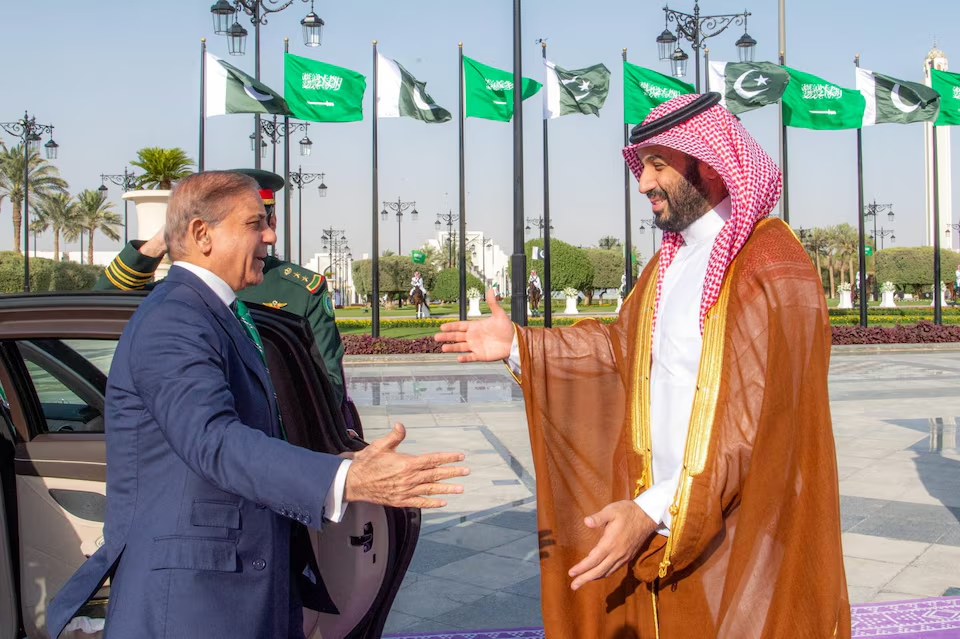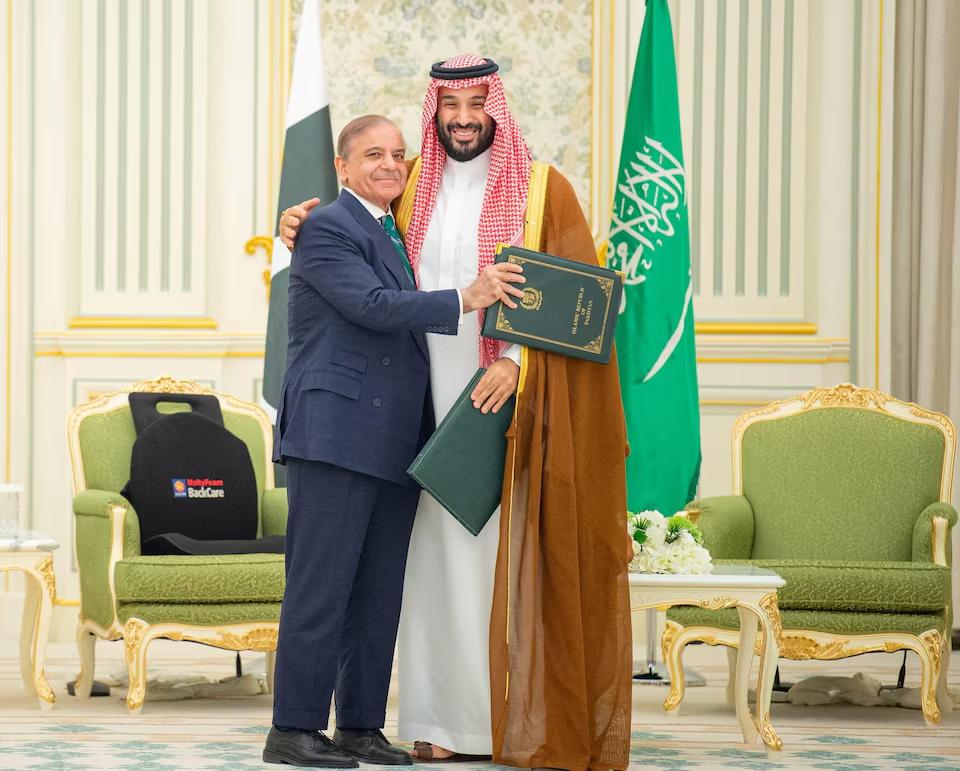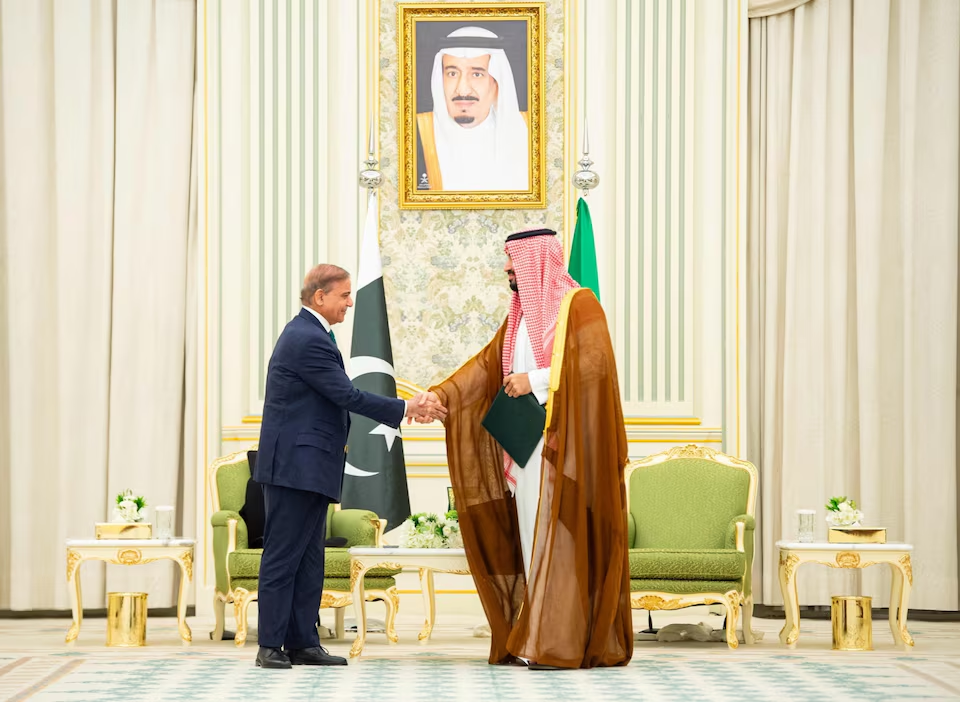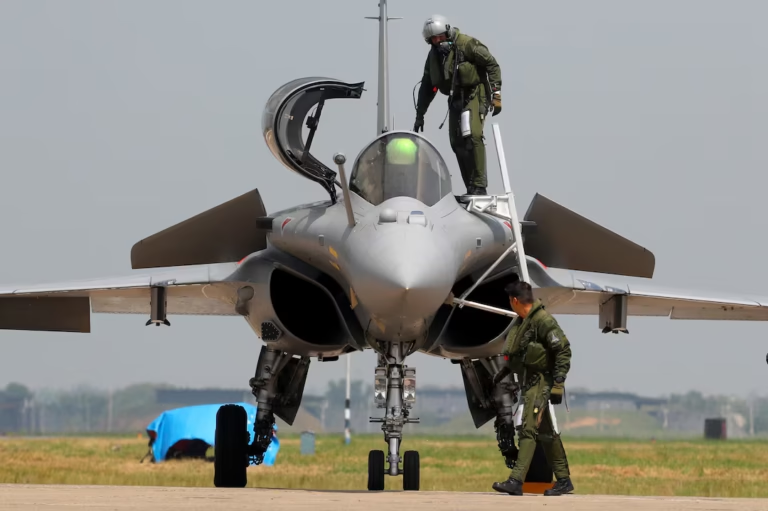Riyadh, September 18, 2025 – In a significant escalation of their decades-long alliance, Saudi Arabia and Pakistan signed a formal “Strategic Mutual Defence Agreement” on Wednesday, pledging that any aggression against one nation will be treated as an attack on both.
The pact, inked during Pakistani Prime Minister Shehbaz Sharif’s state visit to Riyadh, marks a deepening of military ties between the oil-rich Gulf kingdom and the nuclear-armed South Asian power, raising eyebrows in Washington, Tel Aviv, and Tehran.
The agreement was formally unveiled at Al-Yamamah Palace, where Saudi Crown Prince and Prime Minister Mohammed bin Salman welcomed Sharif, accompanied by a high-level delegation including Army Chief Field Marshal Syed Asim Munir, Foreign Minister Ishaq Dar, and Defence Minister Khawaja Asif.
State media from both countries captured the moment: the two leaders embracing after affixing their signatures, with Munir and Saudi Defence Minister Khalid bin Salman standing by.

“This agreement reflects the shared commitment of both nations to enhance their security and to achieving security and peace in the region and the world,” read a joint statement from the Pakistani Prime Minister’s Office. It explicitly states that “any aggression against either country shall be considered an aggression against both,” aiming to bolster joint deterrence and expand defence cooperation across military domains.
The timing of the pact is no coincidence. It comes just a week after Israel’s controversial airstrike on Doha on September 9, targeting Hamas political leaders during ceasefire talks mediated by Qatar—a move that drew widespread condemnation from Arab states, including Saudi Arabia, for violating Qatari sovereignty and undermining regional diplomacy.
Gulf nations, long reliant on U.S. security guarantees, have grown wary of Washington’s reliability amid shifting American priorities and the Israel-Hamas conflict. A senior Saudi official, speaking anonymously to Reuters, emphasized that the deal is “not a response to specific countries or events but an institutionalization of longstanding and deep cooperation.”
Yet analysts see it as a clear signal of diversification: Saudi Arabia hedging against potential U.S. retrenchment while leveraging Pakistan’s nuclear arsenal for added deterrence.
Pakistan, which has maintained close military ties with Riyadh since the 1980s—including joint exercises and troop deployments—brings its estimated 170 nuclear warheads to the table. Queried on whether the pact extends a “nuclear umbrella” to Saudi Arabia, the Saudi official replied: “This is a comprehensive defensive agreement that encompasses all military means.”
The deal builds on a “historic partnership extending nearly eight decades,” rooted in Islamic solidarity, shared strategic interests, and economic interdependence—Saudi Arabia remains a top oil supplier to cash-strapped Pakistan, which in turn provides training and personnel for Saudi forces.
Strategic Implications: A Shift in the Middle East’s Power Balance?

The pact arrives against a backdrop of escalating regional flashpoints. In the Gulf, Houthi attacks on Red Sea shipping—linked to Yemen’s Iran-backed rebels—have disrupted global trade, prompting Saudi calls for stronger collective defence. For Pakistan, it offers a bulwark amid border skirmishes with India earlier this year and economic pressures from IMF bailouts.
On X (formerly Twitter), reactions ranged from jubilant Pakistani users hailing it as a “Sunni nuclear shield” to cautious observers warning of Iranian retaliation or Indian countermeasures.
| Key Provisions of the Pact | Details |
|---|---|
| Mutual Aggression Clause | Any attack on Saudi Arabia or Pakistan triggers a joint response from both. |
| Scope | Encompasses “all military means,” including potential nuclear assets, though not explicitly stated. |
| Objectives | Enhance joint deterrence, expand defence cooperation, and promote regional stability. |
| Historical Context | Builds on 80 years of ties, including Pakistani troop deployments in Saudi Arabia since 1960s. |
Experts like those at the Financial Times note it could “shift the strategic calculus” in a volatile region, complicating Saudi-Israeli normalization efforts under the Abraham Accords. Riyadh has stressed its relations with nuclear-armed India remain “strong,” seeking to balance ties with Islamabad’s arch-rival.
For the U.S., it’s a reminder of eroding influence: Gulf states are eyeing alternatives as American commitments wane.
Sharif’s visit, Sharif’s first to Saudi Arabia since his return to power in 2024, also covered economic avenues. Discussions touched on boosting trade—currently at $5 billion annually—and Saudi investments in Pakistan’s energy and infrastructure sectors, amid Riyadh’s Vision 2030 diversification push. “The two brotherly countries” exchanged views on global issues, including the Gaza crisis and efforts for a two-state solution, per the Saudi Press Agency.
As the ink dries, the pact symbolizes a bold realignment: two Sunni powerhouses uniting against uncertainty. Whether it deters foes or invites new rivalries remains to be seen—but in a region where alliances shift like desert sands, this one feels etched in stone.

This is Kyle Thomas, a professional writer, and a news editor. I started my career as a blogger who writes on various topics and then I decided that I should join a NEWS agency where I can work as a NEWS reporter. So, I joined a renowned agency in the town as an internet and after getting 2 years of experience, now I am working as a senior NEWS reporter for The Daily NEWS Times.














